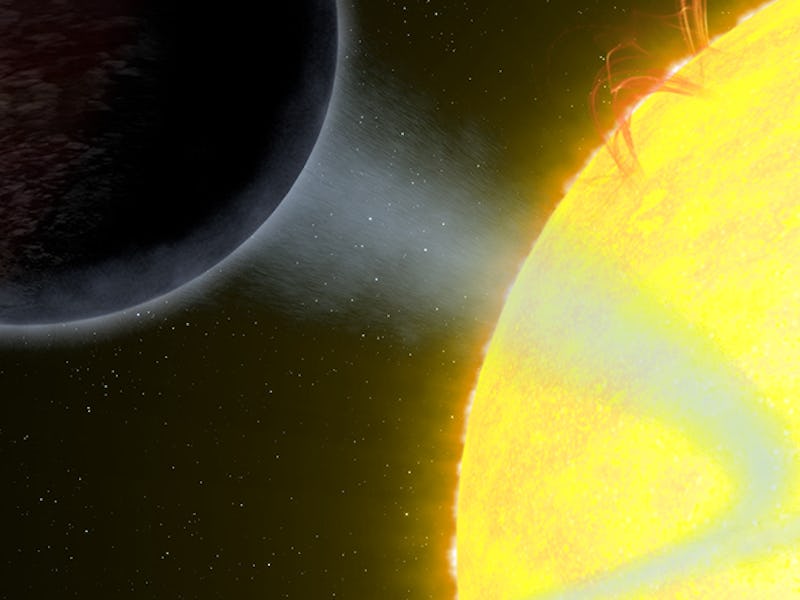Hubble Captures Blistering, Pitch-Black Planet
Think of it as a kind of Vantablack planet

A pitch-black planet that traps at least 94 percent of starlight entering its atmosphere has been successfully observed by NASA’s Hubble Space Telescope.
NASA describes the discovery of the gaseous, hot, Jupiter-like planet as an “oddball.”
“We did not expect to find such a dark exoplanet,” says Taylor Bell of McGill University and the Institute for Research on Exoplanets in Montreal, Quebec, Canada, the lead researcher of the Hubble study. “Most hot Jupiters reflect about 40 percent of starlight.”
What Happened
WASP-12b, as the planet is formally named, was first observed in 2008 when scientists were looking to study its atmosphere. After further investigation, they found that the light shone onto the planet is absorbed by its hydrogen atoms and then transformed into heat energy. This explains why it’s the hottest planet ever discovered.
At around 4,000 degrees Fahrenheit, it is as hot as some stars.
The planet has a fixed daytime and nighttime side given its close proximity to the star it is tidally locked onto. The day side is responsible for the “light-eating” effect.
This illustration shows one of the darkest known exoplanets — an alien world as black as fresh asphalt — orbiting a star like our sun.
Why It Matters
The purpose of any exoplanet research is to find potentially habitable worlds. While that’s certainly not the case with WASP-12b, for obvious reasons, there is still plenty to be gleaned from further study of it.
The kind of extreme variability of planets WASP-12b demonstrates is inherently fascinating in itself, and helps us learn more about planetary structures and space phenomena we haven’t even imagined yet.
“This new Hubble research further demonstrates the vast diversity among the strange population of hot Jupiters,” Bell said. “You can have planets like WASP-12b that are 4,600 degrees Fahrenheit and some that are 2,200 degrees Fahrenheit, and they’re both called hot Jupiters. Past observations of hot Jupiters indicate that the temperature difference between the day and night sides of the planet increases with hotter day sides. This previous research suggests that more heat is being pumped into the day side of the planet, but the processes, such as winds, that carry the heat to the night side of the planet don’t keep up the pace.”
What’s Next
The planet, which appears to be downsizing, will continue to be observed further in the future. It is thought to be getting steadily devoured by its “cannibal” star, but there’s certainly time for more discoveries about it to be made before it is entirely eaten up. It is estimated to have 10 million years or so left in existence.
If you liked this article, check out this video on how light pollution affects the planet.
Oh, hello. You’ve made it to the end of this story! Congrats! Now tell us how to make Inverse better. Take our user survey and maybe win an Amazon gift card! ⚡️